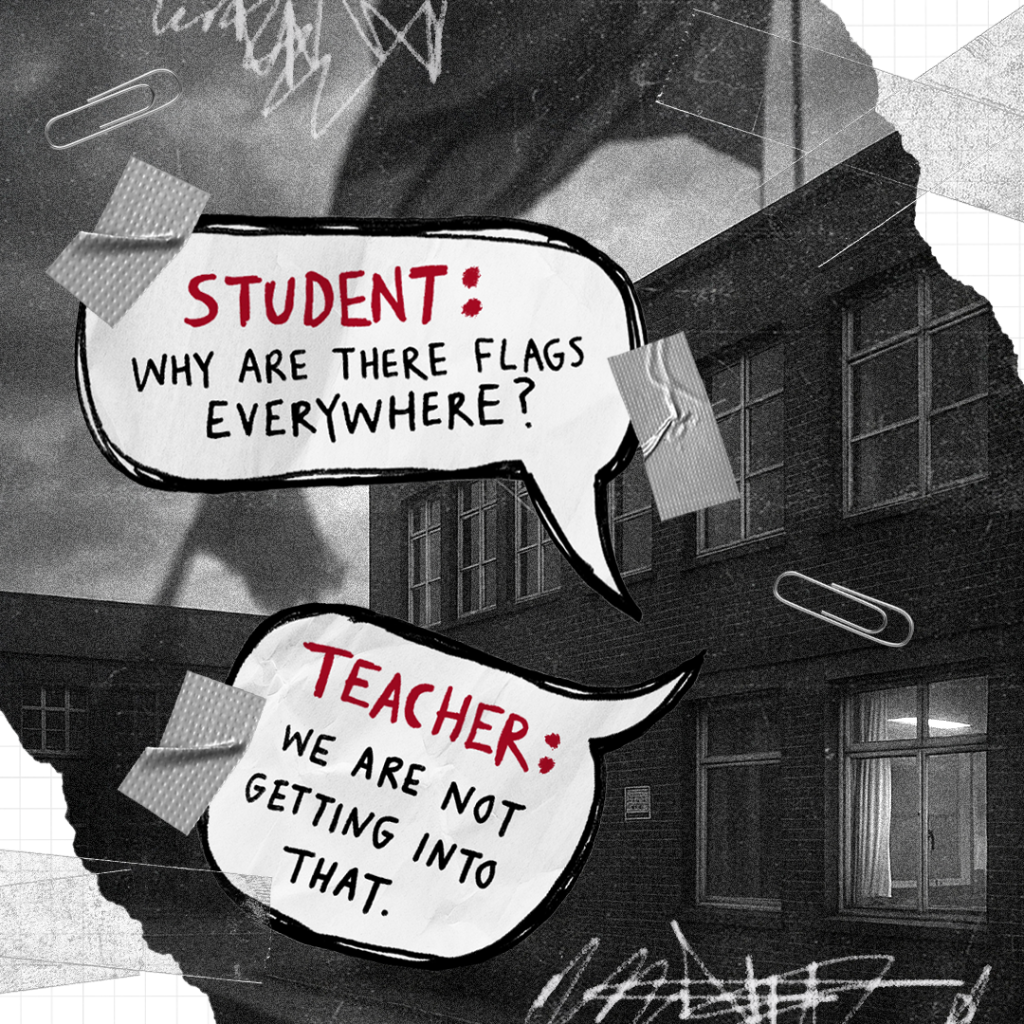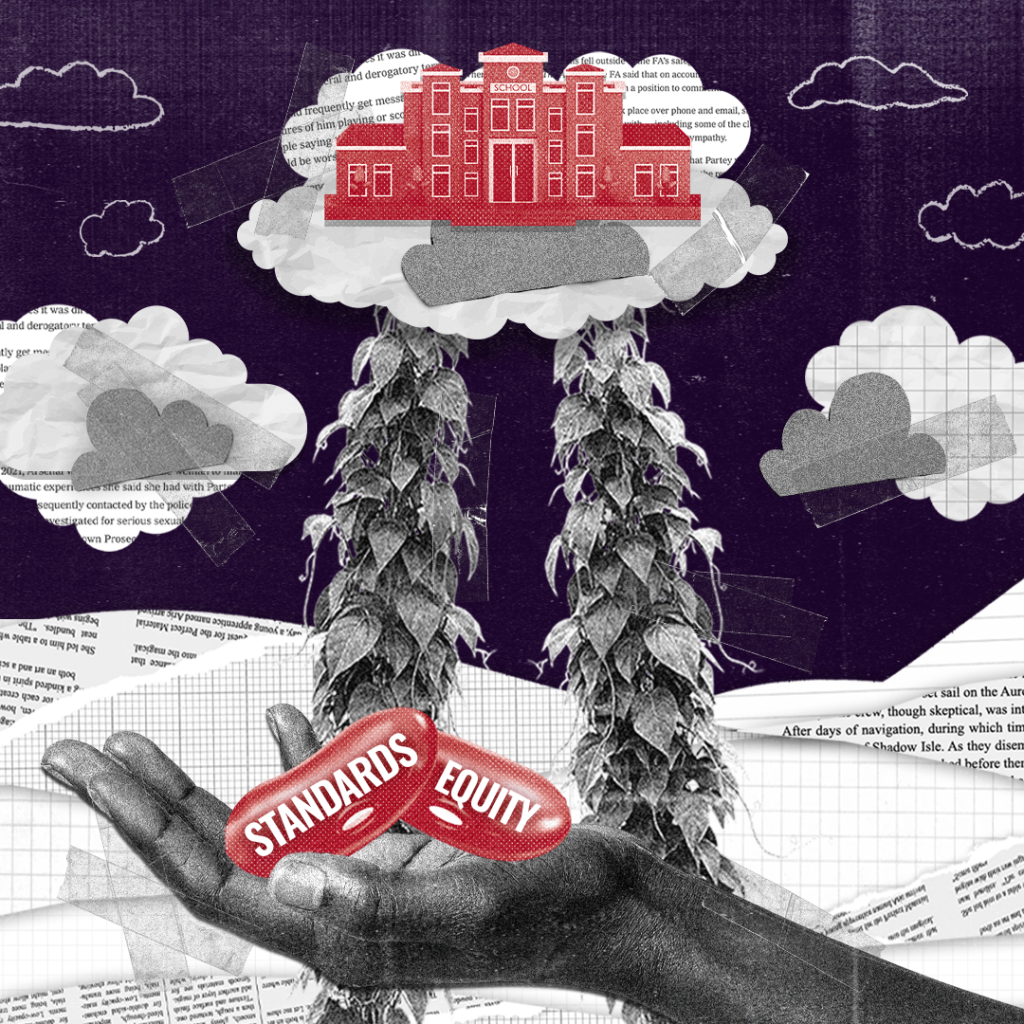A London flags debate in schools piece from Pimlico Academy to today.
Student: “Why are there flags everywhere?”
Teacher: “We are not getting into that.”
If that question lands in your classroom tomorrow, how will you meet it?
On our way into the Class 13 office we have yet to see a St George’s cross on Brixton Road, or a Union Jack on Electric Lane. Even so, Lambeth isn’t a stranger to this debate. This isn’t just a headline; it’s the London flags debate in schools, and it’s walking straight into classrooms. In 2021 the new headteacher at Pimlico Academy raised a large Union Jack as part of a push for “British values”. Alongside the flag, leaders introduced policies that banned hairstyles that “block the view of others”, restricted the colour of hijabs, and doubled down on an already Eurocentric history curriculum.
The flag did not cause harm. It was the exclamation mark on it. Students and staff walked out. Soon after, the headteacher resigned and then moved into a role within Future Academies, the chain that runs the school.
What Pimlico revealed
Fast forward to 2025. Across England, people have cable-tied St George’s crosses to lampposts and painted them on roundabouts. The surge has been dubbed Operation Raise the Colours. Some call it pride. Others experience it as a warning. Both can be true. If you choose to fly a symbol, you do not get to choose how it lands. History travels with it. At Pimlico, a flag in the playground cast a long shadow. It told young people, in policy and in practice, your body must be restricted, your faith muted, your past rewritten. This is not really a flag debate. It is a question of power, belonging, and the stories children are asked to live inside.
Last summer’s lesson: the flags debate keeps returning
Last August we said the hardest truth is not about “them” but us. Do not double down on securitised responses; redesign daily practice around Affirmation, Critical Thinking, Community, and Democracy.
When we embed the four principles, dread gives way to dialogue
If you’re navigating classroom conversations after the London march and a young person asks a question you don’t have the answer to, start with Affirmation. Move to Curiosity, then Community, then shared decisions. That moment is not a trap. It is an opening.
Affirmation: start by naming the courage to ask
At minimum, acknowledge the question and the asker.
“Thank you for asking that.”
“I can see this matters to you.”
Affirmation does not mean agreement. It means the person is seen, and the question is welcome here.
Critical thinking: get curious about what they already know
Invite them to bring their thinking into the room.
“What have you heard about this?”
“What evidence would help us understand it better?”
Pose questions that open, not close. Curiosity is affirmation in action.
Community: think with, not at
Note others who might share that view, or see it differently. Invite a quick pair-share or if during break, invite others in. Reference another colleague, student that you have had a similar conversation with.
“If you see it differently, what shaped your view?”
Community means no one carries the question alone.
Democracy: decide together what to do next
Co-create the follow-up.
“Which one question do we want to investigate as a group?”
“Who else should we bring into this another student or a colleague we’ve spoken with—so the circle of voices gets wider next time?”
Democracy is not a poster. It is the distribution of power in the room. Share it, name it, practise it.
When community becomes a wall
Community is one of our principles; however, it can harden at the edges. Communities define an “us”, and often, an unspoken “not us”. If we romanticise community, we miss how easily belonging is rationed and outsiders are produced. In the current flag moment, thousands of vulnerable young people are being welcomed into communities that offer them a role, a ritual, and a reason often by naming an enemy. The job of school is to build communities that hold difference without humiliation, so the first place a young person feels seen is not a crowd that needs an enemy.
The cost of not embedding the principles
When we withhold affirmation, punish curiosity, isolate community, and hoard decision-making, we don’t create compliant young people, we create a vacuum. Vacuums get filled. Young people will find recognition and belonging where it is offered. Far-right channels, misogynist forums and gangs are organised to supply exactly that. They offer simple stories to make sense of pain, a role to play, an “us” to belong to and a “them” to blame. It looks like care. It is control. If our corridors feel like sorting lines and surveillance, we make their pitch easier.
What these groups counterfeit
- Affirmation, without care: flattery that ignores harm.
- Critical thinking, replaced by certainty: answers without inquiry.
- Community, without accountability: tribe that needs an enemy.
- Democracy, swapped for obedience: orders dressed up as voice.
Embedding Affirmation, Critical Thinking, Community, and Democracy is not a wellbeing add-on. It is safeguarding in practice. It is how we make school the place where young people are hardest to exploit.
Micro-moves you can use tomorrow
- One-sentence affirmation before any answer.
- A quick knowledge sweep: what we already know, what we wonder.
- Pair-share or a short circle to widen the lens.
- Seating for community, not control: rotate seats weekly; a “sit-with-someone-new” moment once per day.
- A visible display in your class or school for sources to expand thinking.
Where we go next
If this is the work you want to lean into, join our Foundational Learning course or keep an eye out for our next short course. We double down on Affirmation, Critical Thinking, Community, and Democracy and turn them into habits, not headlines.











